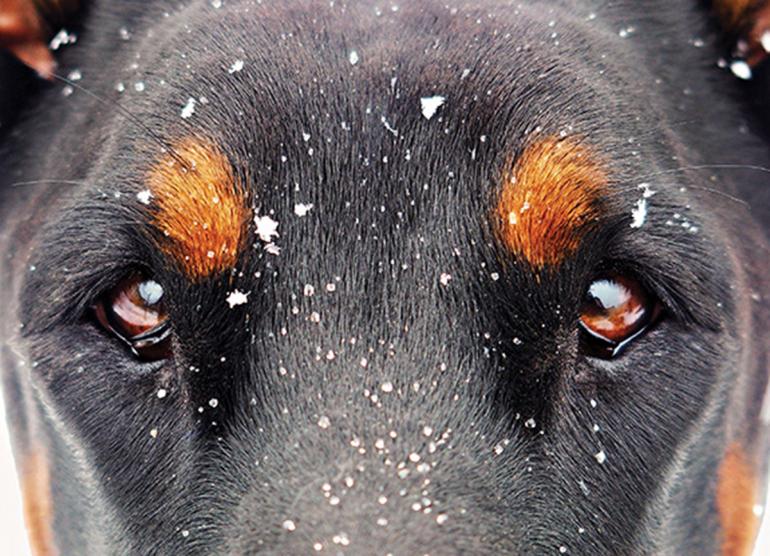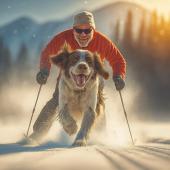Homeward Bound
How to recover lost dogs.
Spring is here and that means more time spent outside. Unfortunately, during these outings, you may find yourself separated from your dog. If you do, remain calm. The first few hours are important. Some dogs may wander back home or to the trailhead unaided, but if yours doesn’t, you want to spend that time working to find him. Dogs can run long distances, especially if they are fearful of new people and situations, or are startled by fireworks or thunderstorms. Panicked, fearful, or intact (not spayed or neutered) dogs are more likely to be hit by cars and behave unpredictably. The sooner you find your dog, the less likely that he will be injured.
Talk to people in the area where you last saw your dog. Keep a current photo to show people, and post flyers where you last had your pet. Gregarious and friendly dogs may approach the first person they meet, but more timid dogs are likely hiding. Bring some favorite treats, especially ones that are usually off-limits such as cheese or hot dogs. Drop small morsels in the area to coax him out. Call his name in a loud clear voice, but don’t sound angry as the dog may be less likely to return.
Call your local animal shelter; in our case, that’s Heart of the Valley in Bozeman and Stafford in Livingston. Provide a current photo, fill out a lost-pet report, and visit the facilities daily. Shelters have many strays and may not be able to identify all found animals. The best way to find your pet is to look at every animal to see if it is yours. This is especially important in the first couple days, as many shelters have a maximum stay limit. After this, the animal is adopted out to a new family and you are no longer able to claim ownership. Go early and often to prevent this from happening.
Heart of the Valley has a great website with lost-and-found pet recommendations, with links and contact information for local resources. File a lost-pet ad with the Chronicle, call KGLT to post a daily radio announcement, leave flyers at every veterinary clinic and pet store in town, and post photos on social media. Bozeman Lost Pet is a Facebook group that is very active, but Craigslist and other websites may also be useful. Make sure your voicemail can accept new messages.
If night is falling, leave some personal items where your dog was last seen, then go back in the morning with his food. Pet owners have told me that leaving dirty laundry or a dog bed retained their pet in an area where he could be found days later. This is important somewhere like Hyalite, where wandering is a big concern. Coordinating with Animal Control or the local police may be possible if your pet is in danger or could be frightened and aggressive to those who approach him.
Consider whether your dog could have hidden inside somebody’s vehicle, outbuilding, or garage. This is more common in cats, but many pets have ridden miles away in vehicles or been unknowingly locked in buildings.
 |
 |
Once you do find your dog, prevent him from being lost again. If he escaped from your yard, find the gap under the fence or faulty gate latch that allowed him out. If he slipped from his collar, be sure to replace it with a sturdy, snug collar. Your veterinarian can help you be sure it isn’t too tight. Spay and neuter dogs that roam; male dogs in particular will go to any lengths to find females and will climb fences or chew through tie-outs. Properly restrain your pet in any vehicle and don’t allow untrained or undisciplined dogs to ride in truck beds. Seatbelts can prevent dogs from being ejected in car accidents. Fireworks and thunderstorms are extremely stressful for many dogs; ask your veterinarian how to develop a “safe-room” to shield him from these events. Don’t punish your dog when he does return home; he will not understand why you are angry and will be fearful of returning in the future.
Maximize the chances that you will be reunited with your dog before he gets lost. Place nametags on his collar with current contact information. Use tags that can be riveted onto the collar, making them silent and nearly impossible to lose. Have your veterinarian implant a microchip under the skin; this is a form of permanent identification that can be used if tags are lost. Register the microchip and update this information regularly. If your pet is fearful of people or animals, pursue socialization classes. This is necessary to both help him be more comfortable out in the world, but also to make it less stressful for him to be helped by strangers or treated medically.
Michelle Pogge has been a veterinarian in the Gallatin Valley for eight years and currently works at Gallatin Veterinary Hospital.











